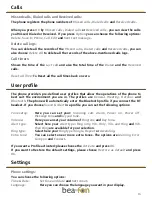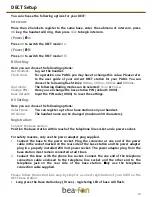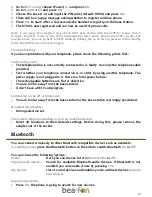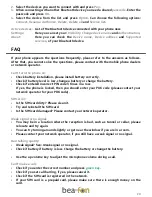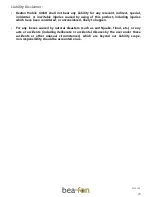
23
Switch off when refuelling
Do not use the phone at a refuelling point. Do not use near fuel or chemicals.
Interference
All wireless phones may get interference, which could affect performance.
Traffic Safety:
Do not use a hand-held telephone while driving a vehicle. Always secure the phone in its
holder; do not place the phone on the passenger seat or where it can break loose in a
collision or sudden stop. Remember road safety always comes first!
Operating environment:
Remember to follow any special regulations in force in any area and always switch off
your phone whenever it is forbidden to use it, or when it may cause interference or
danger.
Use the phone only in its normal operating positions.
Parts of the phone are magnetic. Metallic materials may be attracted to the phone.
Do not place credit cards or other magnetic storage media near the phone, because
information stored on them may be erased.
Electronic devices:
Most modern electronic equipment is shielded from radio frequency (RF) signals.
However, certain electronic equipment may not be shielded against the RF signals from
your wireless phone.
Pacemakers:
Pacemaker manufacturers recommend that a minimum separation of 20 cm (6 inches) be
maintained between a handheld wireless phone and a pacemaker to avoid potential
interference with the pacemaker. These recommendations are consistent with the
independent research by and recommendations of Wireless Technology Research.
Persons with pacemakers:
Should always keep the phone more than 20 cm (6 inches) from their pacemaker when
the phone is switched on.
Should not carry the phone in a breast pocket.
Should use the ear opposite the pacemaker to minimise the potential for interference.
If you have any reason to suspect that interference is taking place, switch off your
phone immediately.
Hearing aids:
Some digital wireless phones may interfere with some hearing aids. In the event of such
interference, you may want to consult your network operator.






